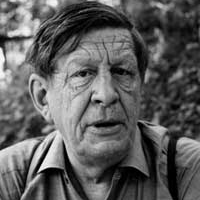Musee des Beaux Arts by W.H. Auden: Introduction
Musee des Beaux Arts is one of Auden's most distinguished short poems. It was first published in 1939, though written by during winter holidays in Brussels in 1938. This lyrical poem is based on his actual experience. There he happened to see the special Brueghel paintings in the Musees Royaux des Beaux-Arts. Auden was deeply impressed by the paintings of Brueghel, the famous sixteenth century Flemish painter.

W.H. Auden (1907-1973)
Although Icarus forms the center of the poem, Auden also draws his imagery from the two other paintings of Brueghel: Birth at Bethlehem and Massacre of the Innocents. The thought of these two paintings supports the main argument Auden develops, in this short poem. In one of them, some children were skating near a lake. While other children were playing pleasantly, one of them was drowning! In another painting, one man was being hanged on a tree by a tyrant; and near that tree a horse was rubbing its back on another tree. In the third and most impressive painting, Icarus, the mythical character was falling from the sky into the sea; but a farmer was ploughing undisturbed in a field nearby and a ship was moving calmly to its destination and everything was turning away in a leisurely manner while the boy was screaming and falling into the sea! All these paintings symbolized a profound reality of life to the poet. He felt that the painters of those pictures understood the 'place of suffering' in human life: they understood that suffering continuously takes place in normal life, and that 'life must go on'. All those paintings represented the reality that human life is full of suffering, but suffering comes unannounced and take place in any normal situation in life. They also suggest that though great disasters keep happening in the midst of normal life, we should go on with the normal things of life
The poem centers round two basic ideas: (i) the indifference of Nature and humanity to the fact of individual suffering, (ii) children in the modern times do not believe in religion. Whereas the old are anxiously awaiting the re-birth of Christ, children who are more interested in games remain unconcerned about Christ and the Christian religion. Auden develops both these themes in an ironical and detached manner.
This beautiful, lyrical poem also contains the music and harmony of a causal but compact piece of conversation. The tone of the poem is markedly easy and conversational. We feel listening to the poet thinking aloud or talking to some friend. It stresses, like Brueghel's paintings in the museum in Brussels, the importance of life is carrying on despite whatever appalling atrocities may be happening in some other part of the world.
Cite this Page!
Sharma, Kedar N. "Musee des Beaux Arts by W.H. Auden: Introduction." BachelorandMaster, 23 June 2017, bachelorandmaster.com/britishandamericanpoetry/musee-des-beaux-arts-introduction.html.
